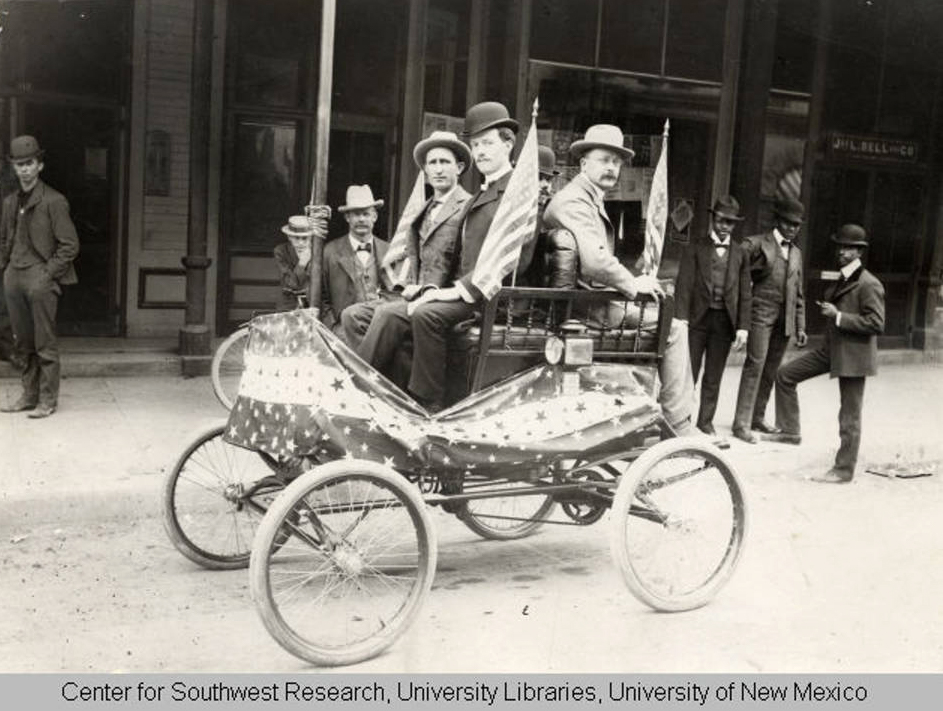Albuquerque's First Automobile
In November of 1900, Robert L. Dodson, who was a local bicycle dealer, purchased a steam-powered Locomobile in Denver and set off with company representative B.L. Camwell with Albuquerque as the planned destination. On December 5, after driving the vehicle over narrow wagon roads - none of them paved and many full of ruts - and through treacherous Raton Pass, they arrived in their "horseless carriage" at Raton, attracting the attention of all passersby as the vehicle traveled through town "gracefully and noiselessly," according to the Raton Reporter story published that day. This trip over Raton Pass had taken five days.
The Locomobile was designed by the Stanley Brothers in Lewiston, Maine and was fueled by gasoline but powered by steam. At Ribera Station in San Miguel County, it ran out of gasoline, a scarce commodity in 1900. Dodson was able to purchase some fuel at Lamy and sent it back to Camwell. Dodson appears to have taken the train from Lamy into Albuquerque, and Camwell then traveled through Cerrillos, arriving in Albuquerque on the afternoon of December 7th shortly after Dodson.
According to later press reports, Albuquerque greeted the vehicle's arrival with a mix of enthusiasm and consternation. The Locomobile scared horses, and, for a time, local authorities considered banning it altogether from the city. It was dubbed the "devil mobile" by some and at one point Dodson was threatened with hanging. For two years, Dodson owned the only car in town, but as history attests, he was correct in predicting that the automobile would become the preferred mode of transportation.
The Locomobile was designed by the Stanley Brothers in Lewiston, Maine and was fueled by gasoline but powered by steam. At Ribera Station in San Miguel County, it ran out of gasoline, a scarce commodity in 1900. Dodson was able to purchase some fuel at Lamy and sent it back to Camwell. Dodson appears to have taken the train from Lamy into Albuquerque, and Camwell then traveled through Cerrillos, arriving in Albuquerque on the afternoon of December 7th shortly after Dodson.
According to later press reports, Albuquerque greeted the vehicle's arrival with a mix of enthusiasm and consternation. The Locomobile scared horses, and, for a time, local authorities considered banning it altogether from the city. It was dubbed the "devil mobile" by some and at one point Dodson was threatened with hanging. For two years, Dodson owned the only car in town, but as history attests, he was correct in predicting that the automobile would become the preferred mode of transportation.
